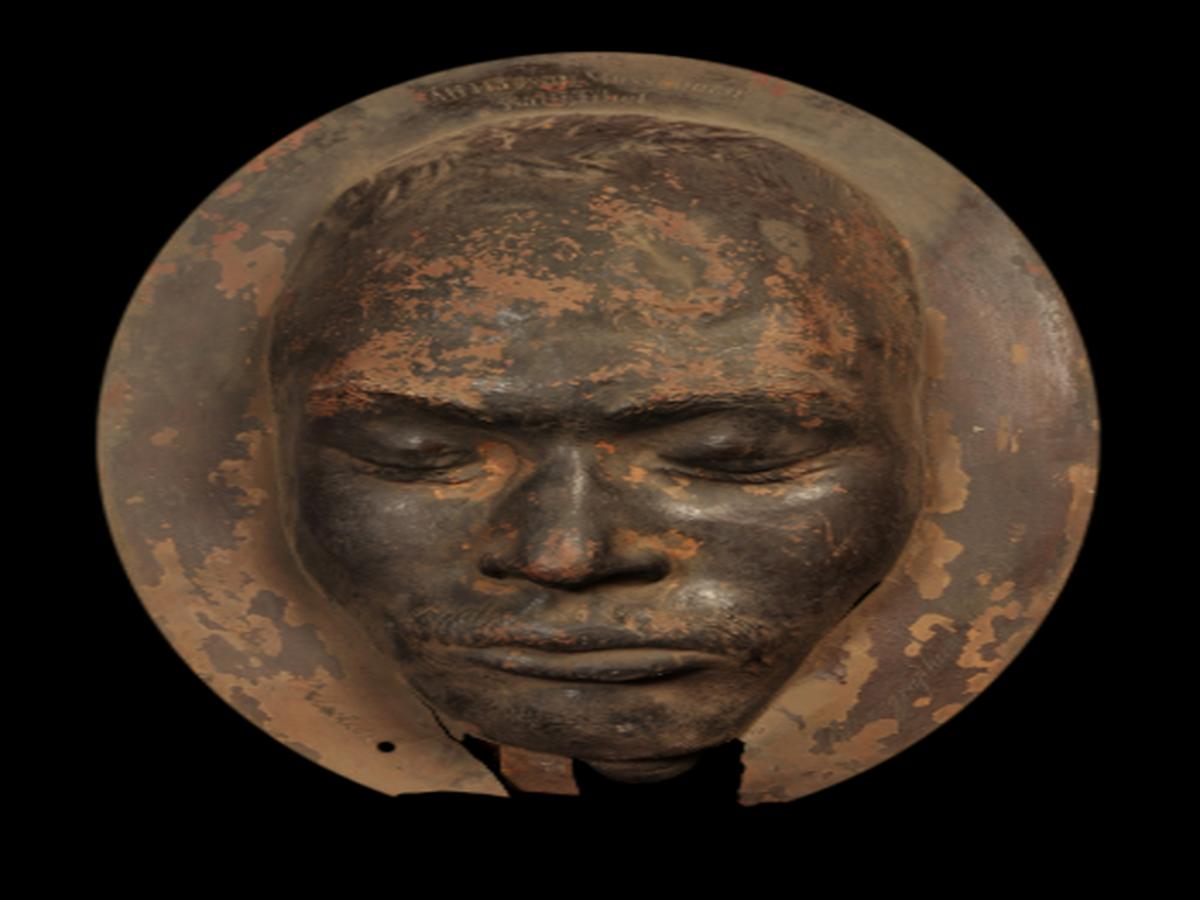State
Tribe Name
Art Type
short description
This elliptical metal cast represents the Lebser ofise of one Tulsi Hauser from Ladakh in India. The upper portion of the mould bears an inscription with a name and locality, giving an intense and lifelike impression of the individual. This object, belonging to the Bhotia tribe, serves as a memorial object and an artifact vying for cultural importance with respect to the question of memory and veneration-a quality deeply embedded in the cultural fabric of the community. The Bhotia tribe is one such indigenous tribe inhabiting the region of the Himalayas specifically within Uttarakhand, Sikkim, and Ladakh. Traditionally, Bhotias have been pastoralists and traders and are of Tibetan descent. Their culture and language are of Tibetan Buddhism.
Thumbnail

Filter Postion
Right
Filter Background
Off
Theme
Filter Header Image

content
Image

description
This elliptical metal cast represents the Lebser ofise of one Tulsi Hauser from Ladakh in India. The upper portion of the mould bears an inscription with a name and locality, giving an intense and lifelike impression of the individual. This object, belonging to the Bhotia tribe, serves as a memorial object and an artifact vying for cultural importance with respect to the question of memory and veneration-a quality deeply embedded in the cultural fabric of the community. The Bhotia tribe is one such indigenous tribe inhabiting the region of the Himalayas specifically within Uttarakhand, Sikkim, and Ladakh. Traditionally, Bhotias have been pastoralists and traders and are of Tibetan descent. Their culture and language are of Tibetan Buddhism.
In Ladakh, they hold a reputation for their distinct structural designs, craftsmanship, and philosophical practices. The ritual and memorial functions of its making have often been speculated, linked to the idea of respect and continuity in individual memory or that of the group. Withstanding the severity of extended seasons of drought and harsh weather, these days institutions have enabled the Bhotias to maintain the safeguard of culture through art. This metal face mould of Tulsi Hauser was very likely created by local artisans, demonstrating such talents. Today housed in the Indian Museum, Kolkata, this piece is one of the rarest examples of Himalayan portraiture and traditional identity-making. The expression and shape of the mould provide insight into the private life and collective situation of the Bhotia people on the trans-Himalayan frontier.
In Ladakh, they hold a reputation for their distinct structural designs, craftsmanship, and philosophical practices. The ritual and memorial functions of its making have often been speculated, linked to the idea of respect and continuity in individual memory or that of the group. Withstanding the severity of extended seasons of drought and harsh weather, these days institutions have enabled the Bhotias to maintain the safeguard of culture through art. This metal face mould of Tulsi Hauser was very likely created by local artisans, demonstrating such talents. Today housed in the Indian Museum, Kolkata, this piece is one of the rarest examples of Himalayan portraiture and traditional identity-making. The expression and shape of the mould provide insight into the private life and collective situation of the Bhotia people on the trans-Himalayan frontier.
Image Mode
landscape
promoted
On
Verified
Off
